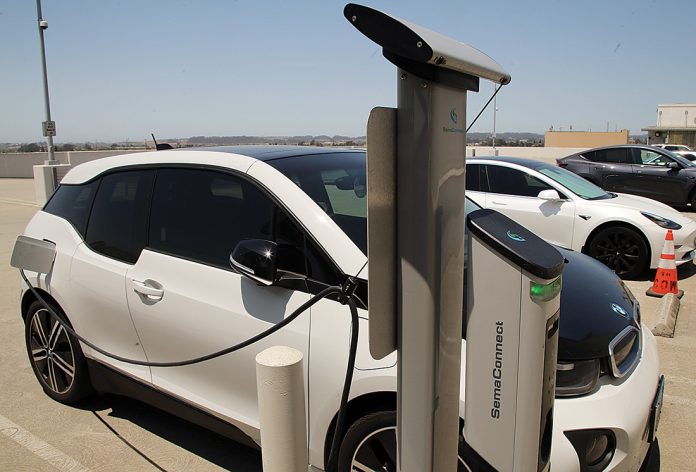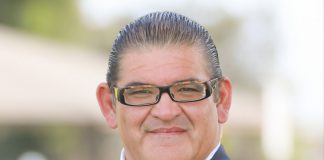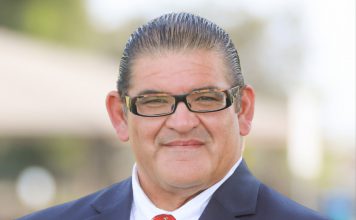WATSONVILLE—The Watsonville City Council on July 6 approved a resolution to move up its goal of reaching net-negative carbon emissions from 2045 to 2030.
To reach net-negative emissions, an entity must reduce its carbon footprint to less than neutral, so that it is removing more C02 from the atmosphere than it emits.
In 2015, Watsonville approved its Climate Action Plan, now the Climate Action and Adaptation Plan (CAAP). Its goals were based on state legislation as well as California Executive Order B-55-18, which aimed for carbon neutrality by 2045.
But natural disasters such as wildfires and the ongoing “mega-drought” continue to intensify. In fact, Director of Public Works & Utilities Steve Palmisano said, scientists are predicting that by 2027, parts of the state could face conditions similar to the Dust Bowl of the 1930s, when severe dust storms greatly damaged the ecology and agriculture of North American prairies.
The United Nations had sent out a global call to not increase the temperature of the planet by more than 3.6 degrees Fahrenheit—but, unfortunately, Palmisano said, it looks like it is already on track to exceed those predictions.
“We are literally running out of time,” he said at the meeting.
The push for carbon neutrality by 2030 is part of an effort by science-based nonprofit The Climate Center. Their Climate-Safe California platform is built on a suite of policies aiming to address the climate crisis.
“This is actually a statewide, and, ultimately, global initiative that is asking the state of California to step forward and set more ambitious goals around greenhouse gas emissions and climate change,” Palmisano said. “It’s getting us caught up to what the rest of the world is doing, and putting California back into a leadership position.”
In Watsonville, Climate-Safe California’s goal of 2030 was initiated by the City Council Climate Committee, which includes council members Aurelio Gonzalez, Rebecca J. Garcia and Francisco “Paco” Estrada.
“We are nearly past the point of no return,” Estrada said. “We knew what was at stake for decades, what was coming. Finally, people are accepting and are aware of what we should be doing to reverse it.”
Estrada said that disadvantaged communities such as Watsonville are often the first ones to feel the effects of climate change.
“We are trying to secure our future—where we’ll be able to farm, to live,” he said. “I want my daughter to grow up healthy and have a summer without so much worry about fires and drought … climate change is very personal for Watsonville.”
Palmisano said that there are many pieces of Climate-Safe California’s plan that will need to be addressed at the state and regional levels. This includes transportation and natural gas heating in homes, which are the two biggest emitters of greenhouse gasses.
“We need to get people into electric cars, to create a better charging infrastructure,” he said, “and to help businesses and residents move from gas heating to clean energy.”
On the local level, Watsonville’s CAAP includes things such as habitat restoration and tree planting, which are effective ways to take carbon out of the air. They are also looking into a micro-grid system similar to the one that was installed in Gonzales this year.
Everything, of course, comes down to funding. Climate-Safe California is asking for $20 billion to implement new policies.
For comparison, Palmisano cited the $150 billion in damage caused by wildfires in 2018 and the $80 billion in 2019.
“If we took, say, $80 billion of that and put it towards green jobs—that could create about 725,000 jobs in California,” he said.
A just transition for fossil fuel workers into green jobs is part of Climate-Safe California’s guiding principles, which also include prioritizing climate justice, ensuring lower-income communities with Black and Indigenous people of color are protected and have access to green solutions.
“Green business … supports Watsonville in a very direct way,” Palmisano said. “We are well-positioned to take advantage of the new green economy.”
The July 6 virtual meeting saw multiple public comments from residents of all ages, who were all in support of moving Watsonville’s climate goals to 2030. One caller was Nancy Faulstich, executive director of Regeneración-Pajaro Valley Climate Action.
“Now we’re talking,” she said. “This is the thing to do. Think about the name: Who doesn’t want to stand for a Climate-Safe California? We know that this is doing the right thing. Investing money in this ahead of time is going to save so much money down the road.”
Estrada said he was “very happy” to hear people from South County being so supportive at the meeting.
“There’s definitely this idea that Watsonville gets the short end of everything … We sort of have a chip on our shoulder,” he said. “So the fact that so many people understand that climate change goes beyond everything … It’s about our health, safety and securing a future for the next generation.”
For information about Watsonville’s CAAP, visit bit.ly/3kjqdun. Learn more about Climate-Safe California at theclimatecenter.org.










